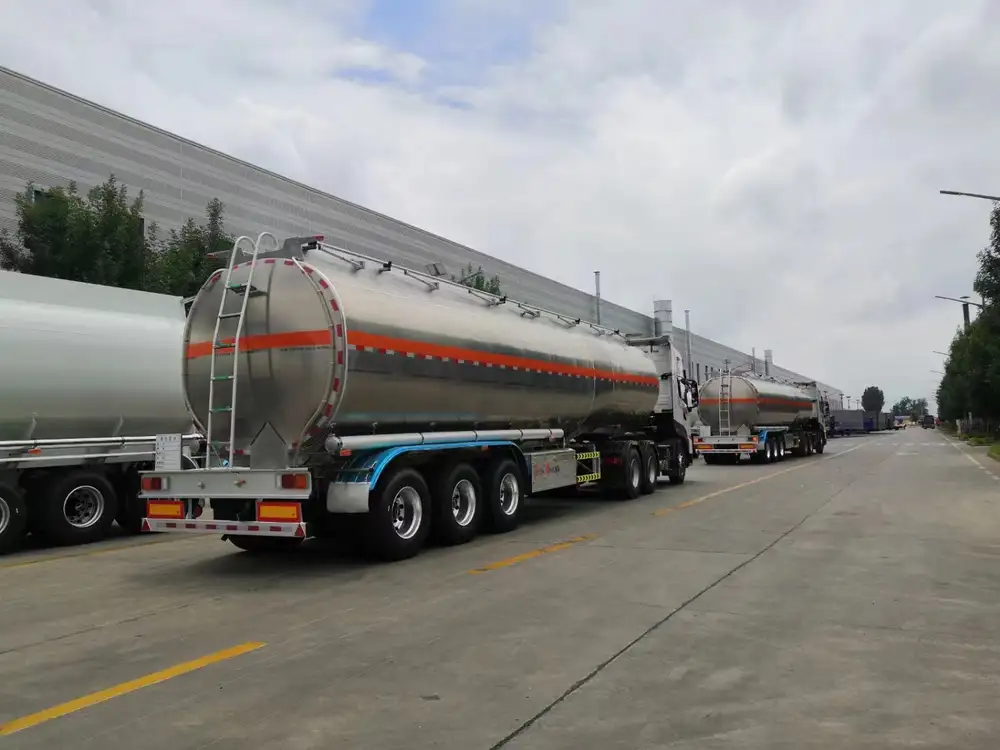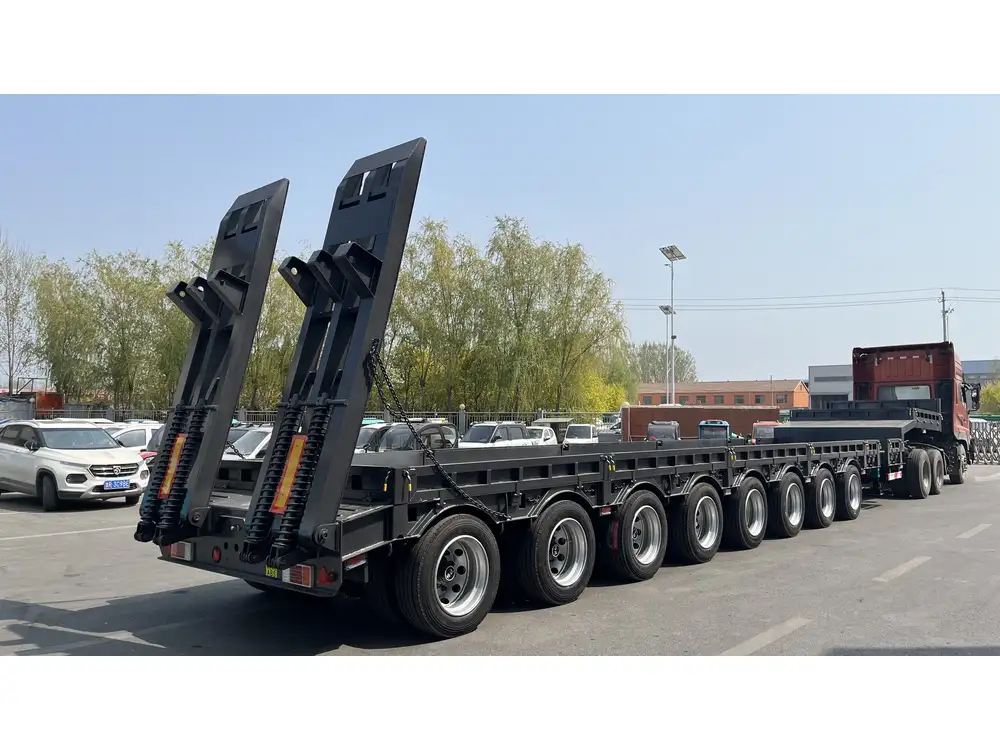Transporting containers efficiently and safely is an integral component of modern logistics and supply chain management, especially in industries reliant on bulk goods. This comprehensive guide outlines essential strategies and considerations for transporting containers with a semi-trailer, ensuring optimal results while maximizing safety and compliance.
Understanding Container Transport Basics
Before delving into the intricate details of transporting containers, it is crucial to grasp the foundational elements involved. Containers come in various sizes, with the most common being 20-foot and 40-foot models, designed to facilitate shipping across different modes: road, rail, and sea.
Key Considerations
| Consideration | Details |
|---|---|
| Weight Capacity | Assess the maximum load capacity of your trailer. |
| Container Type | Ensure compatibility between container and trailer. |
| Regulatory Compliance | Familiarity with local and international transport laws. |
| Insurance Coverage | Choosing adequate coverage for loss and damage. |

Types of Semi-Trailers for Container Transport
Various trailer types are specifically designed for transporting containers. The most common types include:
- Chassis Trailers: Equipped with frames specifically designed to securely hold standard shipping containers.
- Flatbed Trailers: Versatile option offering flexibility but may require additional securing measures for containers.
- Curtain-side Trailers: Protects the cargo from the elements while allowing easy access to containers.
Step-by-Step Process to Transport Containers with a Trailer
1. Planning the Load
Proper planning is the cornerstone of effective container transportation. Factors to consider include:
- Load Weight and Distribution: Ensure the trailer’s load distribution aligns with its specifications to prevent swaying or loss of control.
- Route Assessment: Identify any challenges along the transportation route, including road restrictions, low bridges, and weight limits.

Route Planning Checklist
| Item | Details |
|---|---|
| Map the Route | Use navigation software for accurate routing. |
| Identify Hazards | Look out for construction zones, traffic, and weather conditions. |
| Confirm Weight Limits | Check local road regulations concerning trailer weight limits. |
2. Securing the Container
Securing the container on the trailer is paramount to safe transport. The following steps ensure optimal stability:
- Positioning the Container: Center the container on the trailer to maintain balance during transit.
- Using Twist Locks: Ensure the container is locked into place with appropriate twist locks that prevent lateral movement.
- Additional Straps and Chains: Utilize additional securing methods, such as straps and chains, to add further stability.
3. Pre-Transport Inspections
Conduct thorough inspections prior to embarking on the journey. This includes:
- Trailer Inspection: Check the condition of tires, brakes, and lights.
- Container Integrity: Examine the container for signs of damage or leaks that may compromise cargo.

4. Transportation Regulations and Compliance
Ensuring compliance with an array of regulations is crucial for effective transportation. Key regulations involve:
- Local and Federal Laws: Adhere to Weight and Size Regulations outlined by the Department of Transportation (DOT).
- Permits: Apply for necessary permits, especially for oversized loads that exceed standard dimensions.
5. Executing the Transport
As you begin transporting, maintain vigilant monitoring of the load and driving conditions. Incorporate the following practices:
- Check Mirrors Regularly: Maintain constant awareness of the trailer’s position and whether it is stable.
- Adjust Driving Habits: Foster smooth acceleration and deceleration to minimize the risk of container movement.
- Monitor Weather Conditions: Be prepared to adjust routes or stop for safety in case of adverse weather.
Safety Protocols During Container Transport
Transporting containers is not without risks; therefore, implementing strict safety protocols is key.

Safety Protocols Checklist
| Protocol | Details |
|---|---|
| Driver Training | Ensure drivers are trained to operate heavy-duty vehicles safely. |
| Communication Plan | Establish clear communication channels for emergencies. |
| Emergency Procedures | Develop protocols for breakdowns or accidents. |
1. Safety Equipment Requirements
Always equip your trailer for safety with:
- First-Aid Kit: Comprehensively stocked in case of minor injuries.
- Fire Extinguisher: Accessible and functional in case of vehicle fire.
- Reflective Triangles: To signal caution during breakdowns.
2. Regular Maintenance of Vehicles
Ensuring that both the tractor and trailer are in top condition prevents many accidents. Regular maintenance should include:
- Brake Systems: Assessments and adjustments to prevent malfunctions.
- Tire Checks: Regular inspection of tread depth and air pressure.
- Electrical Check-ups: Ensuring all lights and signals are functional.

Post-Transport Considerations
Once the container has reached its destination, several final considerations come into play:
1. Unloading Procedures
Ensure safe and methodical unloading by adhering to these protocols:
- Use of Forklifts or Cranes: Employ equipment suitable for heavy lifting.
- Check for Damage: Inspect the container and its contents for any damage before signing off on delivery.
2. Documentation and Compliance
After successful delivery, ensure that the necessary documentation is complete. This includes verifying:
- Bill of Lading: Confirming the receipt of cargo and terms of transport.
- Logistics and Delivery Reports: Documenting any issues encountered during transit.

3. Feedback and Continuous Improvement
Analyzing the entire transport process provides invaluable insights. Consider undertaking the following:
- Driver Feedback: Collect any observations or issues raised by drivers for continuous improvement.
- Customer Feedback: Engage with customers to assess their satisfaction and areas for future improvement.
Conclusion
Transporting containers with a semi-trailer is a process intertwined with numerous considerations, operational strategies, and safety measures. By applying the comprehensive guidelines outlined in this article, companies can enhance their logistical operations, ensure compliance with regulations, and significantly minimize risks while optimizing efficiency.
FAQs
1. What permits are required for transporting containers? Permits can vary based on the dimensions and weight of the load, as well as the transport routes. Always check local regulatory guidelines.
2. How can I secure my container effectively? Utilize twist locks, straps, and chains for maximum stability, ensuring the container is centered and locked down.
3. What are the common issues encountered during transport? Common issues include load instability, road restrictions, adverse weather conditions, and mechanical failures.
By adhering to these comprehensive strategies and considerations, we can elevate the standards of container transport and ensure both cargo safety and driver well-being. Whether it’s navigating through traffic or dealing with unexpected weather changes, preparation and diligence create a foundation for successful container transport by trailer. Embrace these practices, and let them guide your transportation endeavors toward heightened efficiency and reliability.



